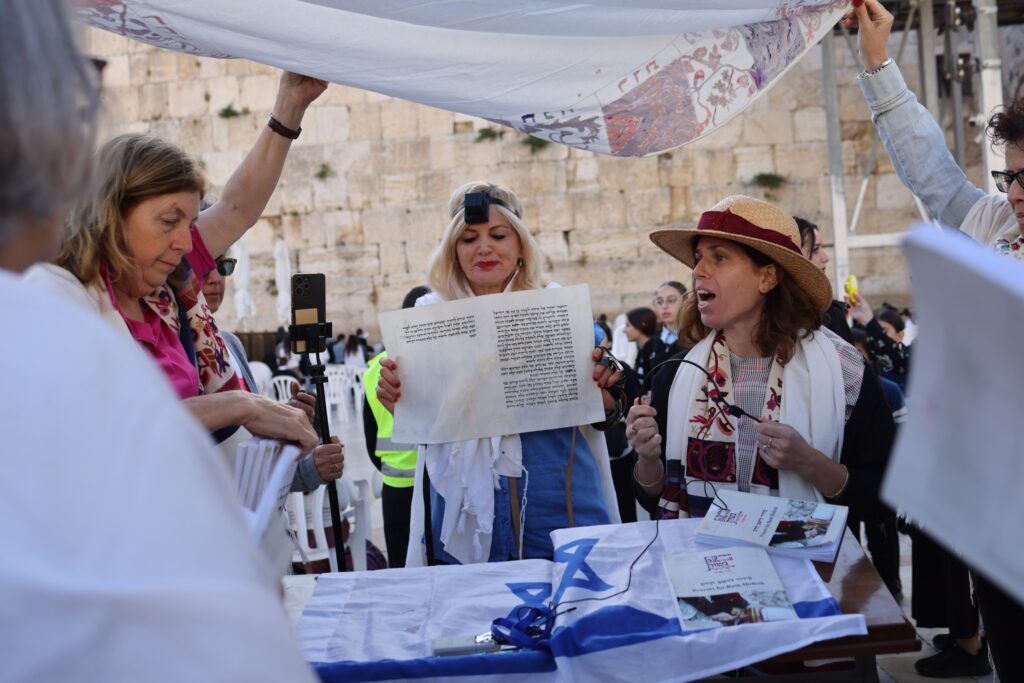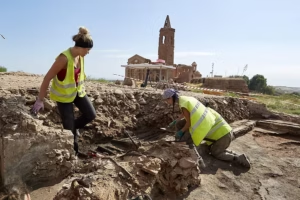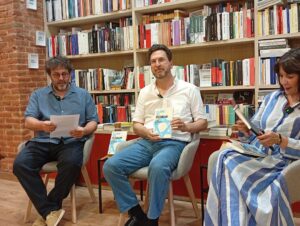Jerusalem – Tammy Gottlieb – Vice chair of Women of the Wall
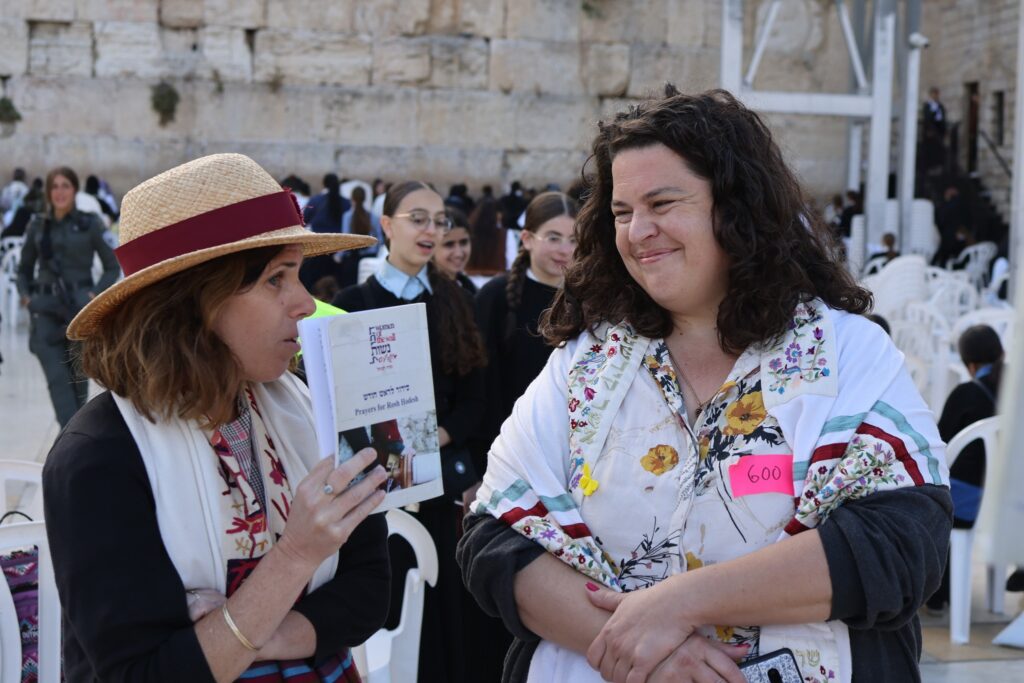
In 1988, a group of women came to a conference in Israel – a conference of religious feminist women. The conference included women from all streams of Judaism: Reform, Orthodox, and Conservative. During the conference, it was Rosh Chodesh (the beginning of the Jewish month), and a group of women wanted to hold a festive women’s Rosh Chodesh prayer service. They asked the hotel for a Torah scroll and a room where they could conduct their prayer, and invited women from Jerusalem to join them.
A day before this prayer service, the hotel’s kashrut supervisor heard that the hotel owner intended to lend a Torah scroll to the women’s group, and forbade him from doing so. He said that if he lent the Torah scroll, the hotel’s kashrut certification would be in danger. The hotel manager had no choice but to tell the women that he would not lend them the Torah scroll. The women were indeed disappointed, but turned lemons into lemonade and since this involved a women’s minyan, they said: “We are so close to the Western Wall, let’s go do our festive prayer there in the women’s section.”
On the morning of Rosh Chodesh Cheshvan in 1988, the group of women arrived at the women’s section of the Wall and began to pray, but it turned out this wasn’t as simple as they thought. Women who were in the women’s section were surprised by the breaking of the silence that prevailed in the place and began to attack them for making their voices heard in public. Men from the men’s section also understood that something was happening in the women’s section, and they too began to attack the worshippers. The group of women who were there felt under attack and left the place after performing only part of the prayer.
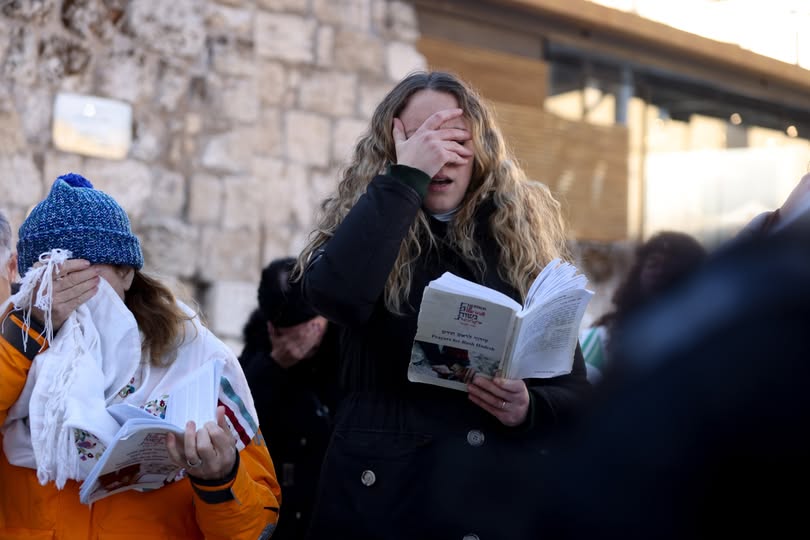
The Israeli women who were part of this praying group were in shock. They couldn’t believe that in their country, they would be expelled from a public place when they were making their voices heard in prayer. They felt embarrassed for this country to which their friends from abroad were coming, their sisters from the diaspora, and humiliated. And at that moment they decided to establish Women of the Wall, from now on they would return every Rosh Chodesh in order to make their voices heard in the public square which is a public plaza and a public place and not a private place – so that it would be clear that women’s voices can be heard publicly in Israel.
Since then, Women of the Wall have been returning to the women’s section of the Wall for 37 years. Every Rosh Chodesh, a group of worshippers comes to hold a women’s minyan in the women’s section of the Wall. Women from all streams of Judaism – Reform, Conservative, Orthodox, and secular. Our mission focuses on achieving the “4T’s” for women at the Kotel: the right to wear a tallit (prayer shawl), don tefillin (phylacteries), lead public prayer (tefillah), and access Torah scrolls. After a series of landmark legal battles, WOW has secured women’s rights to the first three practices but continues the fight for women’s access to Torah scrolls, a practice currently restricted by those enforcing conservative policies at the site. This struggle is emblematic of a broader effort to advocate for pluralism and gender equality in Israeli society.
Women of the Wall have two main problems. First, the violence that has no barrier from the worshippers around them and from the public that comes to demonstrate against them, because they don’t believe that a woman should pray aloud or wrap herself in a tallit, put on tefillin, or read from the Torah.
The second group that Women of the Wall face is the authorities. The Western Wall Heritage Foundation manages the place. In the early years of Women of the Wall’s prayers, they would remove the Women of the Wall themselves from the Wall, claiming that in their prayer they “disturb the public order.” Today, time and again, it doesn’t use its power to protect the worshippers from the rioters, and even goes further and tries to stop Women of the Wall’s activities through meticulous checking at the entrance, by using amplification against Women of the Wall’s prayer, and by closing them in designated places to distance the rioters from them instead of physically removing the rioters from the place.
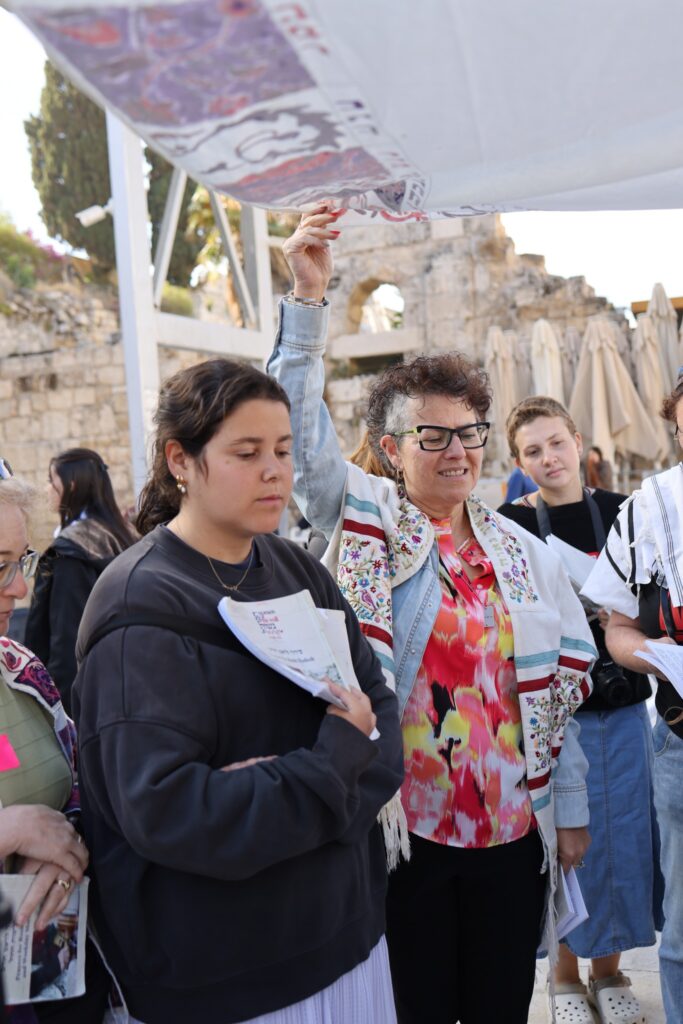
I joined Women of the Wall in 2008 after I heard on the news that a woman was arrested for wearing a tallit at the Wall. As someone who grew up in an egalitarian Conservative synagogue, where wearing a tallit by women and men is an accepted practice, I felt that I had to fight this unreasonable arrest. Upon joining, I met a wonderful group of women from all streams of Judaism. This was an opportunity for me to pray alongside my Reform sister and my Orthodox sister and to stand shoulder to shoulder in prayer, something I usually only do in my Conservative synagogue.
I fell in love with this group of Women of the Wall – with the prayer, with the sisterhood, and also with the struggle. I understood that the presence of Women of the Wall in the public space shows Israelis that there is more than one way to be Jewish and that women, too, can take responsibility and ownership of their Jewish identity in whatever way they choose.
I have been active in Women of the Wall since the first prayer I attended in 2008 – for almost 17 years now. During this time I learned to be a religious feminist activist, to fight for the just and pluralistic future of the State of Israel, and not to let extremist voices win.
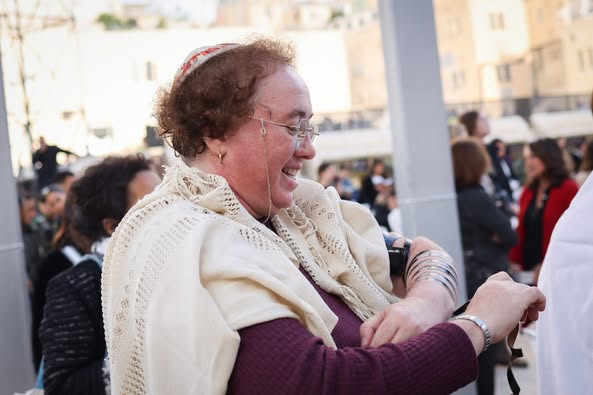
This is a difficult path. The hatred displayed toward us reaches new heights with every election cycle and every governmental instability in Israel. I have more than once returned from prayers with bruises on my body from violence by people who demonstrated hatred toward me. And the cases and complaints I file with the police regarding these attacks are closed time and again. At the same time, Women of the Wall also fight in the courts and in the Knesset to clarify that the State of Israel cannot contain this indecent and immoral situation.
Our path is not easy, but it is the right path in order to preserve Israel and to make Israel a home for all Jews in the world.
The Women of the Wall group renews my strength every month to continue believing in people, to continue believing in friendship and in prayer for the good of all the Jewish people.
Tammy Gottlieb
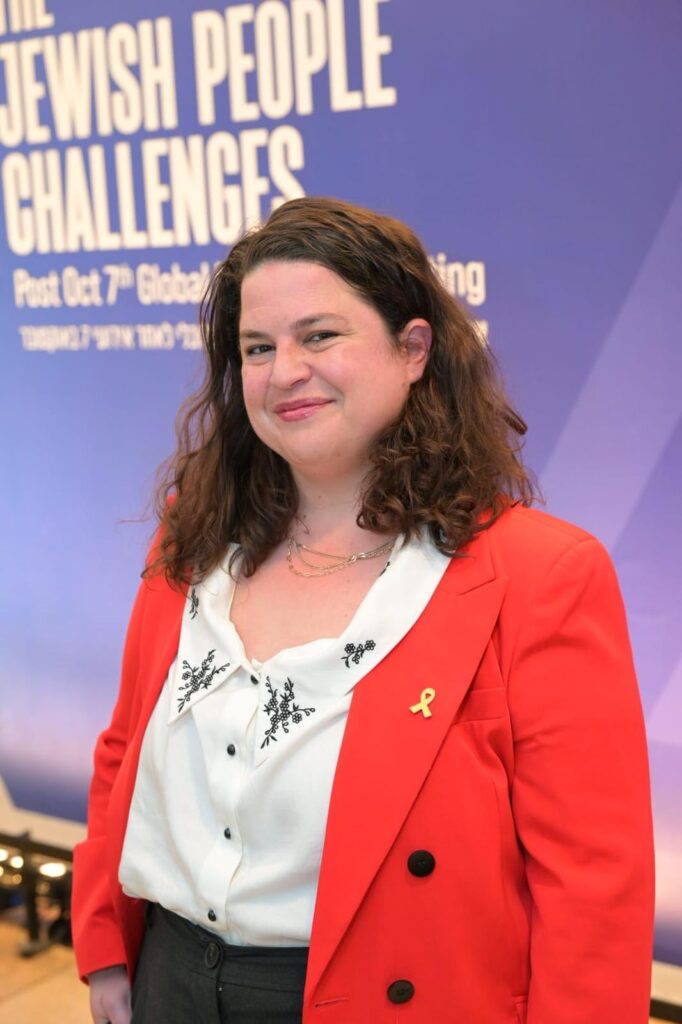
Tammy Gottlieb is the Vice Chairwoman of Women of the Wall which fights for the right of women from all denominations to pray according to their custom at the Kotel. Tammy is also a member of the World Zionist Organization Executive representing the global Masorti/Conservative Movement as well as Director of Signing Anew, an Israeli NGO that supports social action organizations that work to promote the democratic values espoused in Israel’s Declaration of Independence. Tammy also serves on the governing body of the WZO’s Hostages and Hostage Families Directorate, which oversees the implementation of official Israeli government programs serving returned hostages and hostages’ families.
Throughout her entire career, Tammy has worked to shape a Jewish and democratic Israel that’s a welcoming home for every Jew. Raised and educated in a Masorti congregation in Rehovot, Tammy served as a combat soldier in the IDF’s Caracal Battalion back when few women joined combat units. She then worked as a senior manager in the Masorti Movement’s NOAM youth group as well as a senior executive with the Masorti Movement in Israel. Now residing in Jerusalem, Tammy holds a BS in Political Science and Communications from Bar Ilan University and an MA in Jewish Studies from the Schechter Institute

